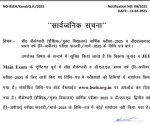From STEM OPT to H-1B: Holding two full-time jobs during the transition may lead to visa complications, here’s how – The Times of India

In a recent case, a foreign worker in the US found themselves caught in a tricky situation after unknowingly holding two full-time jobs for three weeks while transitioning from STEM (Science, Technology, Engineering, and Mathematics) OPT (Optional Practical Training) to H-1B status. The confusion stemmed from one employer sponsoring the worker’s H-1B visa, while the other employer, unaware of the change, continued to pay the worker. This situation has raised concerns about possible visa violations and potential complications for future immigration matters.
The core issue arises due to the strict regulations surrounding employment authorization under US immigration law. STEM OPT automatically ends when an H-1B visa becomes effective. This means that the worker is only legally allowed to work for the employer sponsoring the H-1B. In this case, the worker’s secondary employer continued issuing paychecks even after the H-1B became active on October 1, 2024. By the time the worker resigned from the secondary job, they had been employed by both companies for three weeks. This overlap raises serious concerns about unauthorized work, which could have significant implications for the worker’s visa status.
Explained: The challenge of unauthorized work during the transition
The main issue here is the overlap in employment. While STEM OPT holders are permitted to work for multiple employers, once the H-1B visa begins, the worker is only allowed to work for the employer that has sponsored the H-1B. The secondary employer, unaware of the transition, continued to pay the worker, resulting in a situation where the worker may have been employed without authorization.
The worker had initially intended to transfer their H-1B to the second employer, who offered a higher salary. However, the second employer declined to sponsor the petition, leaving the worker with no legal option but to continue with the primary employer. This situation highlights the risks of not coordinating status changes properly. By the time the resignation was finalized, the worker had unknowingly held two full-time jobs during a critical period, which could be considered a violation of employment authorization.
What are the potential consequences?
Even though the worker did not intend to break any immigration rules, unintentional violations of employment authorization can still lead to penalties. This could create complications when transferring the H-1B to a new employer or applying for a visa stamp abroad. It is essential for foreign workers in similar situations to seek legal advice to assess their status and determine the best course of action.
Maintaining clear communication with employers and staying informed about changes in visa status is crucial during this transition period. Workers should ensure that all resignations are coordinated with visa changes and that employers are aware of the worker’s updated visa status to avoid such complications.
















